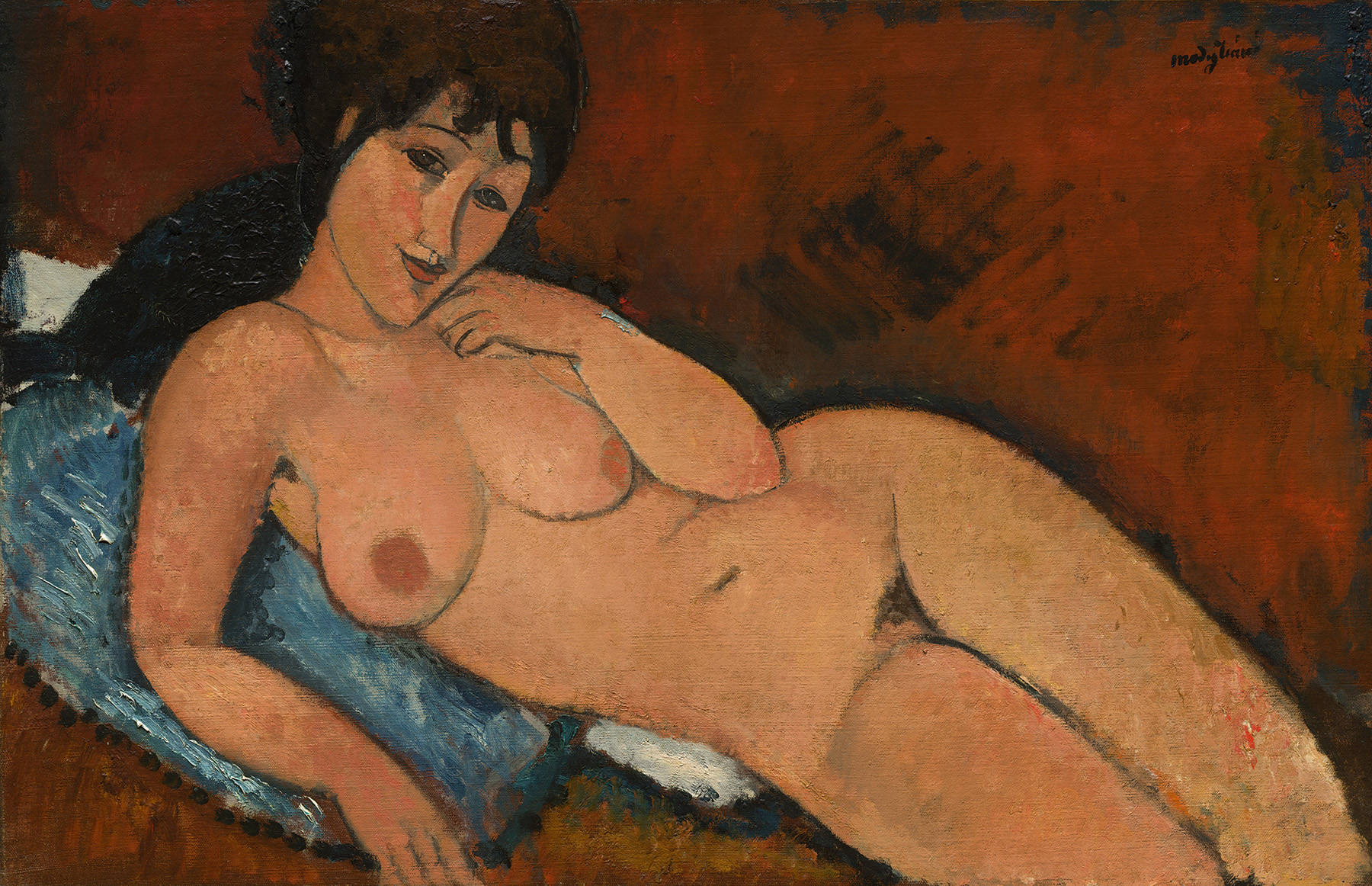empathy
MY PUBIC HAIR – a tell tale from Goya to Stoya

Nude on a blue cushion, Modigliani
My personal history with pubic hair is as touched by trends as any woman’s. If it’s not touched by trends, then it’s touched by men. And media, and corporations who sell us razor blades, domestic wax and tweezers.
I started taking it all down when I was 18. My boyfriends in the following years were excited. Some of them proceeded to do the same and I didn’t care so much to learn how the habit had been ingrained in my grooming routine. I didn’t resent the idea of hair, I simply got carried away with it.
Then, mid twenties, I went out with a guy who professed his love for hair down there and protested against going Brazilian. His exact words were “I’m not dating a 12 year old girl, I’m dating a woman”. So I grew it. Hair. Full bush this time, no trimming. It wasn’t until we broke up that his idea of me looking like a Spanish painting haunted me. I forgot about plucking and coiffing and let my hair down for the following couple of years. In some ways, I liked to know I kept a presence of his memory in a very private, intimate fashion.
A timeline of pubes can be summed up in 3 major moments. Francisco Goya touched first base with La Maja Desnuda (1797-1800), depicting an ordinary woman with rich pubes fully exposed. Pubic hair was deeply associated with erotic desires, thus a taboo. Although belonging to the prime minister and secretly kept in a private room, La Maja Desnuda cast the Spanish Inquisition upon Goya. Then came Gustave Courbet to revel on L’origine du Monde (1866), a glorious, luxuriant showcase of a rich, hairy vulva, only to be followed by Modigliani in 1917, with his appetite for female prodigy in full bloom.
On the other league, Titian, Michelangelo and Botticelli preferred to paint hair-free women. Ancient Egyptians, Romans and Greeks took it all off. Gillette broke into the 20th century with a leading device against bodily hair and Braun taught us to convey to root extraction. Feminism shed a new light over pubes only as late as the 1970’s, refining womanhood opposite to the bare teenage dream.
As Brazilian rose to prominence when Sex and The City featured an episode in 2000 where the leading character gets a bikini wax, the new decade faced a return to roots and a less competitive beauty target. Women are growing their hair again, and while the practice of going commando is still the thing, more and more women embrace the bushy trend, from American Apparel models to film stars and porn actresses like Stoya.
Pubic hair talks about sexuality, capacity of making life, progress from teen years to adulthood. It’s responsible for pheromones and signals nature’s way of protecting us from diseases. The pornographic pose stays different from the sensuous one, and while the first banishes hair to emphasize kink, the second speaks volumes of native femininity. Lack of hair on screen set the trend for private sex life, and as men preferred the bush of 1970s glamorous porn, now they ask for full reveal.
I was 28 when I took the courage to meet the Brazilian monster. Men in my life have suggested, sometimes mildly, sometimes wildly, that I should wax. But this was something I’d finally do for me, out of curiosity.
The pain was brief and excruciating. For someone who’s had as many as 7 tattoos in their life, hair removal feels barbarian and incomparable to getting inked. When it was done, I felt strange, like I lost something attached to my personality. It’s been a month and I’m letting it grow back this time. Whichever preferences others may have, be it the Origin of the world, 1960 French Playboy, or a neat landing strip, one should stick to their own desires. The abolition of pubic hair is a touchy issue. Despite becoming a barometer of public beliefs and trends, its extinction proves unhealthy biologically, sexually and socio-culturally speaking. It is far beyond channelling a cult, or taking care of our bodies. It is an artificial change that, as all changes fuelled against nature, ought to make us wonder about what transformation we are facing as humans, mentalities and the future resort.
—
Ioana Cristina Casapu is the Managing Director of Art Parasites Magazine. She likes Brian Eno, airports and never says no to a good old Gin&Tonic.
Be the first to write a comment.
Your feedback




